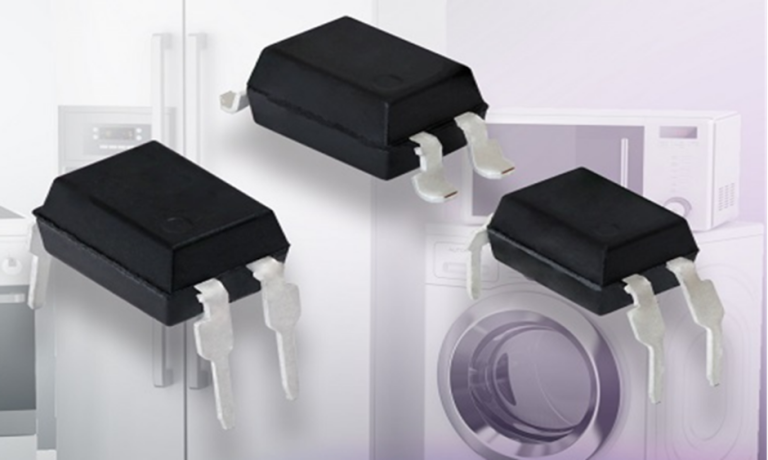Optocouplers are useful electronic devices that transfer electrical signals between two isolated circuits using light. Their primary objective is to prevent high voltages from affecting the circuit that receives the signal. Coming in a wide range of packages, optocouplers are commonly used for switching power supplies, instrumentation, household appliances, and industrial manufacturing. This article explains how the optocoupler circuit works, what it consists of, specifications to consider when choosing one, and more.
What Does the Optocoupler Circuit Consist of? How Does It Work?
There are four types of industrial optocoupler circuits: Photo-Transistor, Photo-Darlington, Photo-SCR, and Photo-Triac. Despite different types, an optocoupler circuit generally consists of two primary elements: the photosensitive device and the infrared LED. These two elements are integrated into a single package, and their wavelengths or response are tightly matched to ensure optimal coupling.
This is how the optocoupler circuit works. The electrical signal is converted into an optical signal on one side of the optocoupler after it is applied to the LED. Then, the LED light falls on the photosensitive element and converts the optical light into an electrical signal. The photosensitive device conducts and allows the flow of current. The same current also flows through the external circuit connected to the photodetector. In this way, the optocoupler couples the signal of one circuit to the other optically.
Specifications to Consider When Choosing an Optocoupler Circuit
When choosing an optocoupler circuit for a certain application, there are some key specifications you should look for. These include (but are not limited to) the following:
Forward Voltage and Trigger Current
The absolute maximum rating of different parameters is generally specified in the optocoupler datasheet. This parameter tells you how to ensure the input LED turns on and provides the desired switching behavior. Also check: Car Stickers
Output-to-Input Current Ratio
Output-to-input current transfer ratio is the ratio of the output collector to the input forward current of the optocoupler’s LED. Different photosensitive devices and elements have different output currents, so your choice of current transfer ratio may vary. But it can be certain that the typical current transfer ratio ranges from 10% to 50%.
Switch Rates
This specific characteristic becomes very important when you use an optocoupler circuit to switch applications. Consider the rise time and the fall time to determine the optocoupler’s maximum switching frequency.
Maximum Isolation Voltage
The isolation voltage is usually specified in kV. It is the maximum RMS voltage up to which the isolation between the two sides of the optocoupler circuit is provided. The value shows a certain insulation resistance.
IEC/UL Certification
Make sure the optocoupler has proper IEC/UL certification, such as IEC 60747-5-2, to ensure you are compliant with safety and industry standards.
PC817 is the Most Popular Optocoupler Circuit
There is a wide range of optocouplers available on the market. PC817 is the most popular and commonly used type. The reason behind it has to do with its variety of benefits, key features, and excellent specifications. PC817 optocoupler contains one phototransistor and one IR LED in its package. Its working is straightforward, and it is suitable for single isolation tasks.
The key specifications/features of PC817 include the following:
· Transistor Type: NPN
· Package Type: 4 Pin DIP & SMT
· Collector-Emitter Saturation Voltage Range: 0.1-0.2
· Max Collector-Emitter Voltage: 80V
· Max Collector Current: 50mA
· Max Collector Dissipation: 200 milliWatt
· Max Emitter-Collector Voltage: 6V
· Max Operating and Storage Temperature: -30c to +100c for operating and -55c to +120c for storage

Reasons to Buy 817 Optocoupler from Refond
If you want an 817 optocoupler for your electronic project, you will never go wrong if choosing the optocoupler circuit from Refond. Its 817 industrial optocouplers have passed 18 reliability tests of the State Grid Corporation of China, proving their reliability and quality.
Here are some of its key characteristics:
ü Narrower chip with the higher current transmission
ü 0 PPM leakage rate
ü Fast response with TR and TF in 10US
ü Perfect isolation and protection with insulation voltage above 5000V
ü Compliant with the highest industry and safety standards, including VDE, UL, and CQC certification.
ü Excellent for electrical isolation, microcomputer interface circuit, solid-state relay, pulse amplifier, switching circuits, level conversion, and more.
Conclusion
Overall, a quality optocoupler circuit offers many benefits and is suitable for electronic projects. For the best result, you can choose 817 optocouplers from Refond. Refond is an industry-leading Opto-semiconductor and LED packaging solutions supplier of LED light sources and more for Mini Micro LED displays, general lighting, AI sensor, etc. Get in touch with Refond to learn more about the company’s vision and high-tech solutions.

